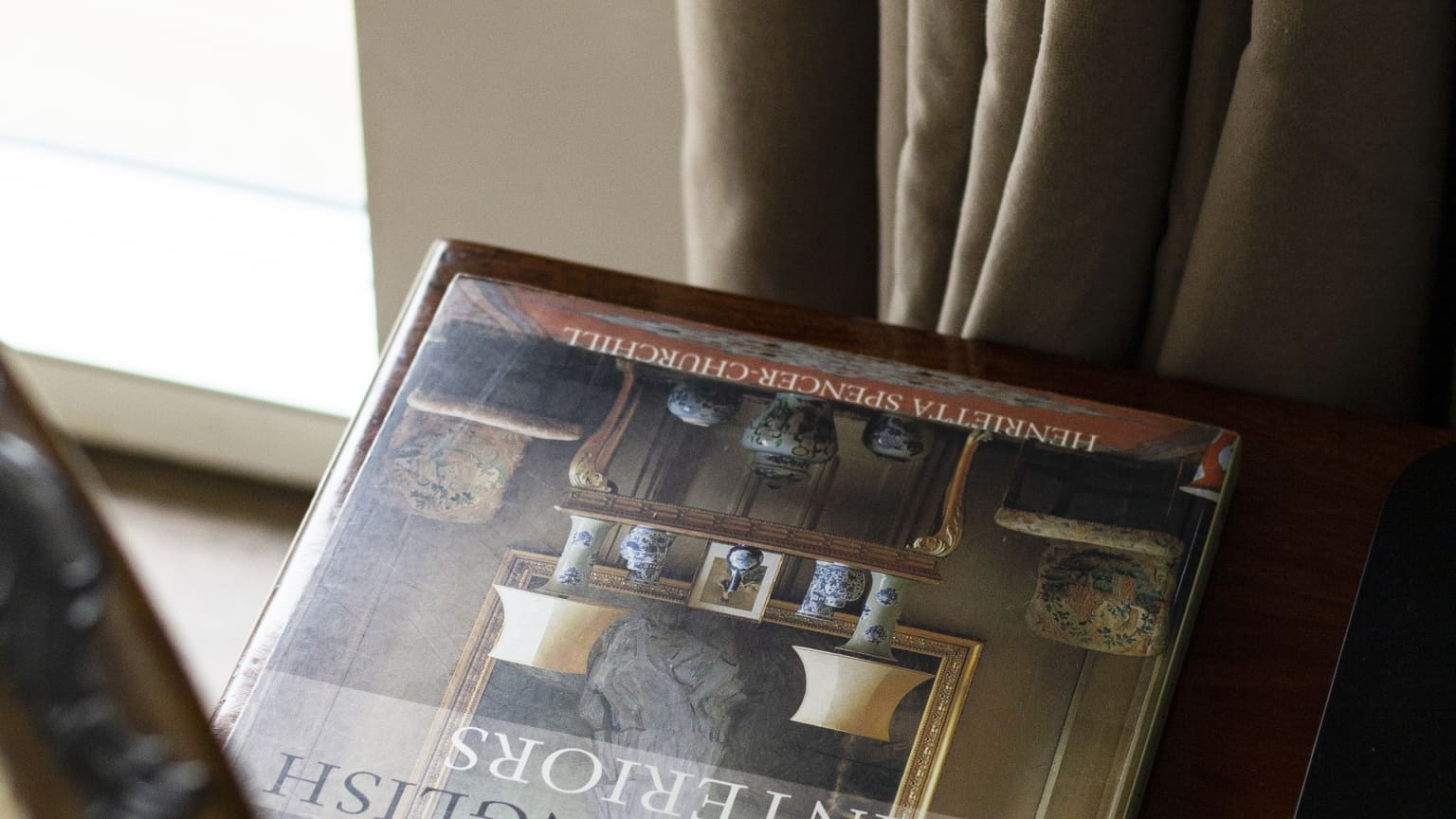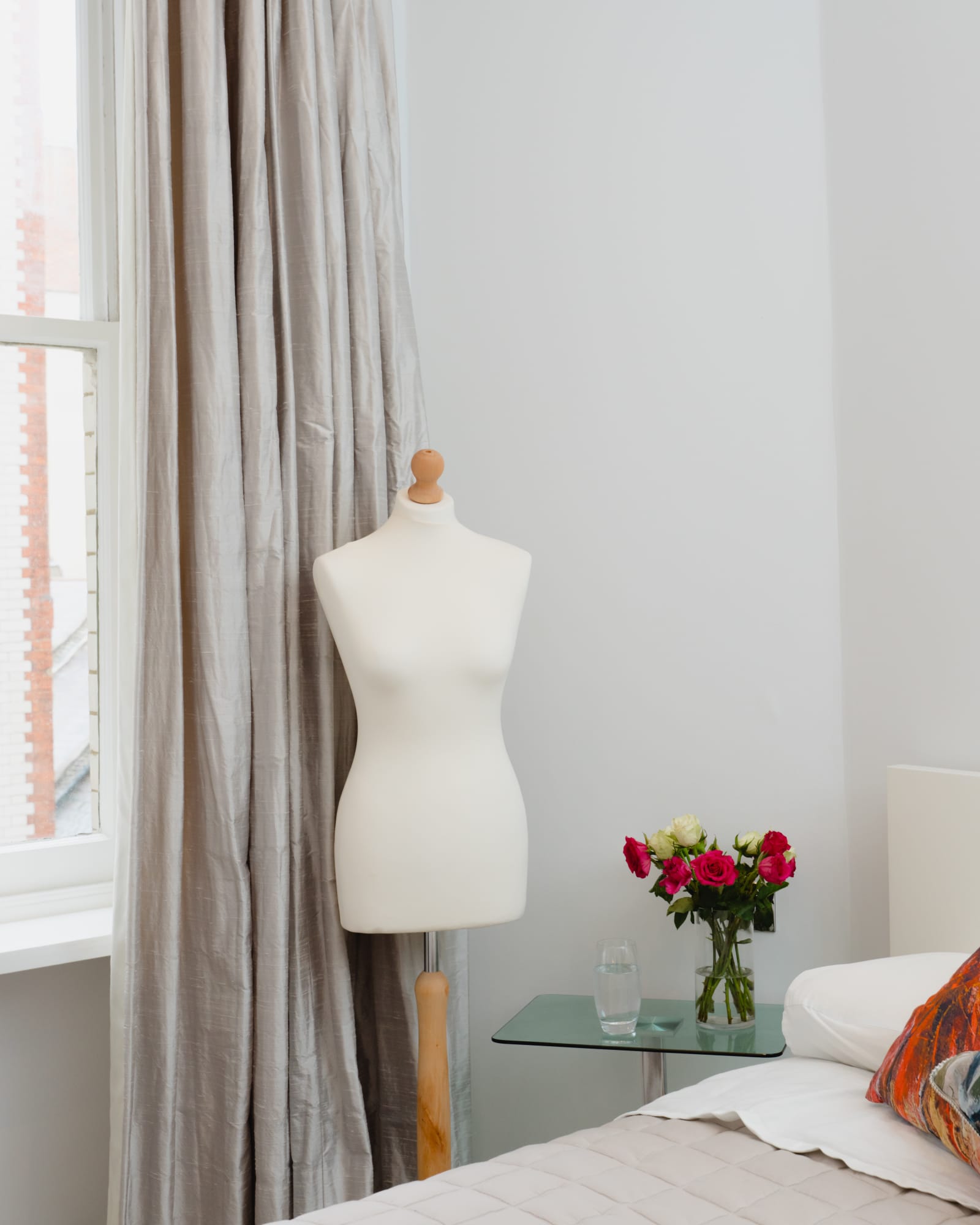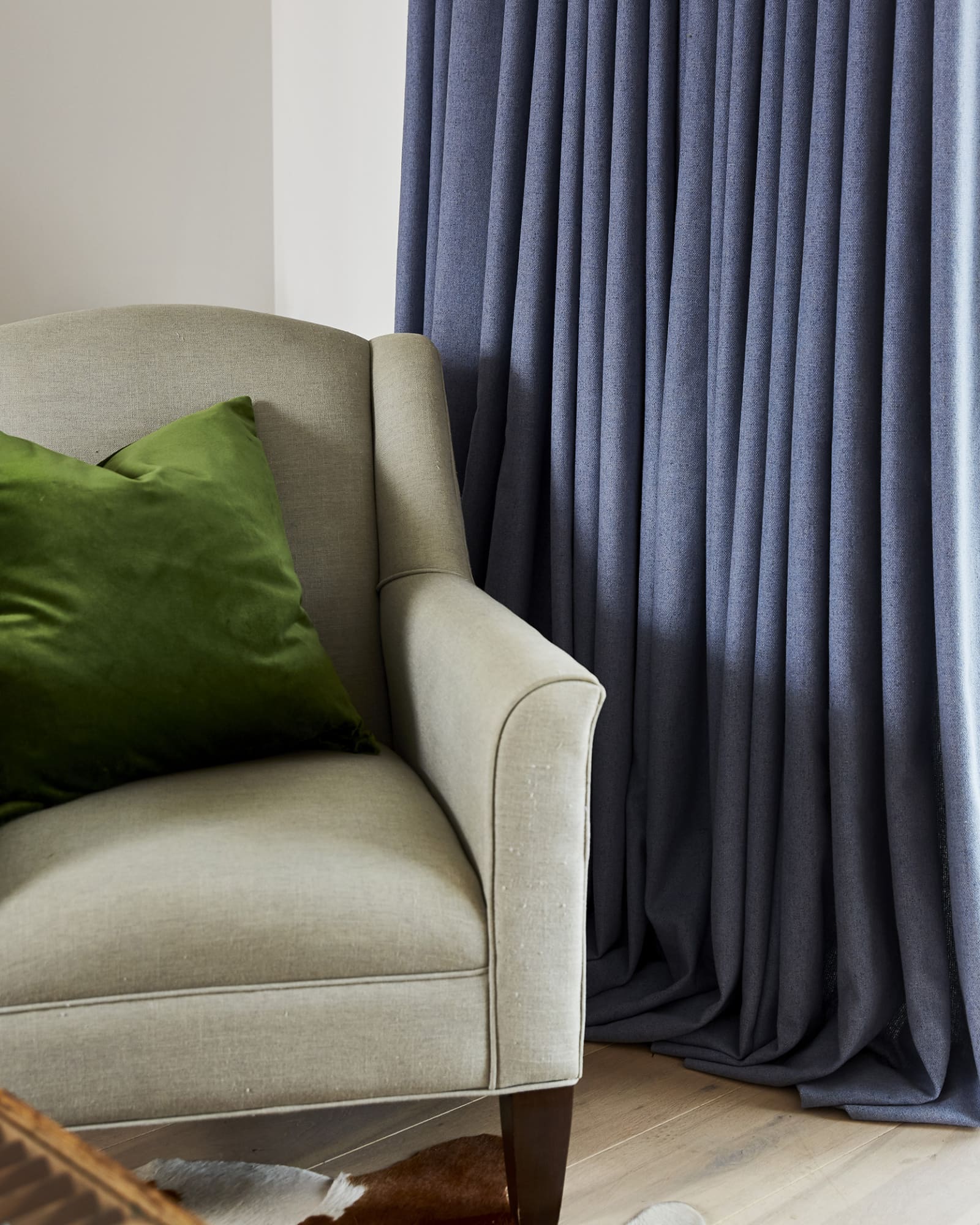Book our home measuring service in London

A Potted History of Curtains
The Stitched team is passionate about the transformative power of curtains and fascinated by their history. What first led our ancestors to hang two pieces of fabric either side of a window and how did the design of curtains change through the years? And if you’ve ever wondered what sort of curtains Elizabeth I, Charles Darwin and JFK may have gazed upon as they lay in bed, do read on…
The first curtains were introduced into the homes of the rich in the 15th century. Before then, textiles had been used on beds and as wall hangings rather than draped at windows, to provide warmth and to soften stark interiors. Windows had been small, narrow slits and were invariably covered with oiled wax papers or internal shutters if covered at all. However, during the Tudor and Stuart periods, curtains of expensive silk, velvet and brocades (fancy woven patterned fabrics) were imported and used as a means of displaying wealth and importance.
Towards the end of the 17th century, designers sought inspiration from France and the French court and this, together with the arrival in England of the Huguenots (skilled craftsmen escaping persecution) led to an increase in the use of hand-made trimmings on curtains. These beautiful tassels and fringes (known as ‘passementerie’) were used on window dressings and bedding in equal measure creating a very ostentatious look.
At this time, curtain tie backs were used and pelmets became fashionable too, hiding curtain rods. Pull-up curtains - the forerunner of our modern-day blinds - were also developed to suit the new style of multi-pane sash windows. Fashionable colours tended to be deep and rich. Blacks and reds were popular, lifted with sparkling trimmings made using metallic threads.
As we moved into the 18th century, walls and windows started to be treated as part of an entire decorative scheme and lighter fabrics were hung on walls. The famous cabinet-maker Thomas Chippendale designed carved wooden and gilded pelmets which became very fashionable, often covering at least a third of the window. The passementerie became even more lavish with the use of silver and gold thread, puff-balls of silk and all-important ostrich feathers dyed in colours as out there as candy pink, acid green and brilliant blue.

Getting bolder with colour...
The discoveries at Pompeii and Herculaneum in the latter part of the 1700s led to a new wave of classicism in interiors. Pull-up curtains were replaced with light, elegant paired curtains often combined with swags and tails. Cords and pulleys were introduced and curtains were made to overlap in the centre. By now, a huge range of fabrics were available including silks, damasks, velvets, voiles and taffetas. And the palette of colours was wilder than ever before - deep turquoise, daffodil yellow and crushed raspberry being particularly popular.
At the time when Jane Austen was writing her most famous novels, during the Regency period, curtains were often built up in complex layers. Outer curtains were pinned back in deep scoops to display under-curtains in a light silk or muslin. Curtain poles became a feature in their own right and were often moulded and gilded with ornate finials in the shape of animal heads, laurel wreaths and rosettes. Colours were very strong and included cherry red, saffron yellow and gold.
The Victorians had a thing for reviving fashions of the past and the 19th century saw a whole host of trends and styles. During his lifetime, Charles Darwin may well have had tartan curtains in his library, swags and tails on the bay windows in his drawing room and fringed, floral curtains on his four poster bed!

Trends go back to the simple...
The often stifling, fussiness of the Victorian period gave way to far greater simplicity as the 20th century beckoned. The Art Nouveau movement, popular in the lead-up to the First World War took inspiration from a range of forms but the overall look was elegant and more simple. Beds were unadorned and windows would invariably be dressed with paired curtains, a blind and sometimes a fabric panel with a motif. The colours chosen were most often pale to create a light and airy feel.
This simplicity extended into the Art Deco period although with the development of the cinema and an obsession with the new-found speed of trains, planes and automobiles, motifs changed and geometric designs became popular.
The introduction of the automatic washing machine in the middle of the 20th century led to an increased use of lighter, washable fabrics such as linens and cottons. And while the interiors of the post-war years tended to be very plain and austere, by the mid 1950s textured fabrics and bold geometric prints were becoming very fashionable. We can imagine that JFK might have appreciated some brightly coloured, tab-topped curtains at his Cape Cod summer home as well as blinds and louvred shutters.
As the 20th century drew to a close, there was a move to greater minimalism in homes and window treatments reflected this. Curtains with simple headings (such as the Wave) tended to be used alone when used at all, and blinds and shutters became acceptable treatments in their own right.
Slow right down...
And so we come to the present day and a world in which fashion and interiors are ever-more closely linked. No sooner does the fashion world go mad for animal prints than they appear in the form of rugs, cushions and furnishing fabrics. But while fashion is transient, interiors need to be less so - we don’t want to be redecorating every year after all. The key therefore is to embrace trends in the form of accessories that can be easily changed and choose fabrics for curtains and blinds in colours and fabrics that we love and will never tire of.



At Stitched we have fabrics in colours to suit every interior and are here to help you make the right decision for your home, so start designing with us today…